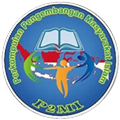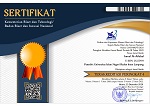ANALISIS SPASIAL POTENSI ZAKAT DAN KEMISKINAN DI INDONESIA
Abstract
Zakat is one of the alternative instruments in reducing poverty in the region and also increasing the impact on neighborhood area. These effects are commonly called spillover effects. The objective of this study is to analysis spatial dependence of zakat and poverty in Indonesia both globally and locally. To find out the spatial effect so that different regional characteristics have implications for the zakat potential and poverty of each region is different. In this study, spasial analysis uses global Moran's I and Local Indicator Association (LISA), this study uses secondary data sourced from the National Amil Zakat Agency (Baznas) and the Badan Pusat Statistik (BPS) the Republic of Indonesia. Based on the results of spatial dependence, the potential for zakat and poverty in Indonesia is significant and positive, this proves that each region concerned has both in terms of the potential for zakat and poverty.
Keywords
Full Text:
PDFReferences
Ali, I., & Hatta, Z. A, Zakat as a Poverty Reduction Mechanism Among the M uslim Community: Case Study of Bangladesh, Malaysia, and Indonesia, Asian Social Work and Policy Review, 8.1, 2014
Anselin, L, Spasial Econometrics: Methods and Models, (Boston dan London, Kluwer Academic Publishers, 1988
Astuti, Y., & Sunartiningsih, A, Implementasi Program Pagu Wilayah Kecamatan Bidang Ekonomi untuk Peningkatan Kapasitas Sosial dan Ekonomi Masyarakat di Kabupaten Temanggung. Journal of Social Development Studies, 1.1, 2020
Ayuniyyah, Q., Pramanik, A. H., Saad, N. M., & Ariffin, M. I, Zakat for Poverty Alleviation And Income Inequality Reduction. Journal of Islamic Monetary Economics and Finance, 4.1, 2018
Badan Amil Zakat Nasional (BAZNAS) Republik Indonesia, Outlook Zakat Indonesia 2020, Jakarta Pusat Kajian Strategis BAZNAS, 2020
Badan Pusat Statistik (BPS) Republik Indonesia, Produk Domestik Bruto (Lapangan Usaha), https://bps.go.id/subject/11/produk-domestik-bruto--lapangan-usaha-.html#subjekViewTab3, diakses 1 Juli 2020
Ginting, A. M, Pengaruh Ketimpangan Pembangunan Antarwilayah Terhadap Kemiskinan Di Indonesia 2004-2013, Kajian 20.1, 2016
Halimatusa'diyah, I, Zakat and social protection: the relationship between socio-religious CSOs and the government in Indonesia, Journal of Civil Society, 11.1, 2015
Karim, A, Kajian Efek Spasial Bantuan Operasional Sekolah (Bos) Menggunakan Analisis Spasial. Jurnal Statistika Universitas Muhammadiyah Semarang, 2.1, 2014
Karim, A., & Prastyo, D. D, Spatial Spillover Effect Of Transportation Infrastructure On Regional Growth. Economy of Region/Ekonomika Regiona, 16.3, 2020
Lapopo, J, Pengaruh ZIS (zakat, infak, sedekah) dan zakat fitrah terhadap penurunan kemiskinan di Indonesia periode 1998-2010, Media Ekonomi, 20.1, 2017
Lee, J. dan Wong, D. W. S, Statistical Analysis with Arcview GIS, John Wiley and Sons, New York, 2001
Mukarromah, O, Keadilan Ekonomi Dalam Pendistribusian Zakat Oleh Badan Amil Zakat Nasional (BAZNAS) Kabupaten Serang-Banten. Bil Dalil, 1.1, 2017
Nasrullah, M, Peran zakat sebagai pendorong multiplier ekonomi. Jurnal Hukum Islam, 2016
Thalib, P., Kurniawan, F., Agustin, E., & Sabrie, H. Y, Enhancing Zakah and Waqf Function: The Application of Islamic Corporate Social Enterpreneurship in Indonesia. In International Conference on Law, Governance and Globalization, 2017
Tsabit, A. M, Peningkatan Kesejahteraan Ekonomi Masyarakat melalui Zakat, Amal: Jurnal Ekonomi Syariah, 1.1, 2019
Syafiq, A, Zakat ibadah sosial untuk meningkatkan ketaqwaan dan kesejahteraan sosial. ZISWAF: Jurnal Zakat dan Wakaf, 2.2, 2016
Zalikha, S, Pendistribusian Zakat Produktif dalam Perspektif Islam, Jurnal Ilmiah Islam Futura, 15.2, 2016
DOI: http://dx.doi.org/10.24042/ijpmi.v13i2.6853
Refbacks
- There are currently no refbacks.
Jurnal Ijtimaiyya is licensed under a Creative Commons Attribution-ShareAlike 4.0 International License.







1.png)
11.png)
.png)


